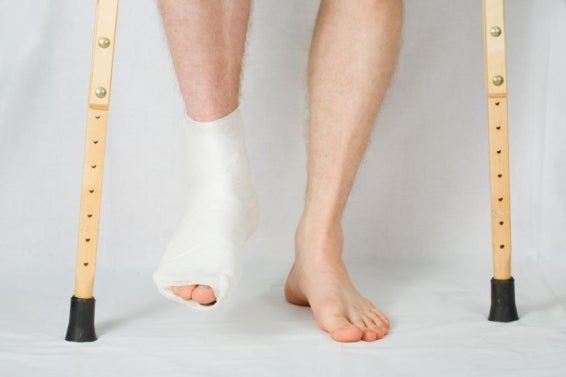View Providers
A sprained ankle is one of the most common ankle injuries doctors see among the young and old alike. A sprain occurs when the ligaments in the ankle are stretched or torn. Most commonly, the sprain is on the outside of the ankle, and the injury can be mild or severe. Most of the time, a sprained ankle heals on its own if you take care of it. Sometimes, however, the injury requires medical care to ensure it heals properly or to check that there is nothing more serious, like a fracture. Here’s how to manage a sprained ankle and information about when you should see a doctor.
Common Causes of a Sprained Ankle
Anyone can sprain an ankle. Ligaments are tough, fibrous tissues but they can stretch or tear if your ankle turns in an unnatural way, causing stress. A twisted ankle can happen very quickly with as something as simple as a misstep off a walkway or step, or on uneven terrain. Other causes include:
- Twisting your ankle while running or playing sports
- Falling
- Landing on your foot awkwardly when jumping
Sprained Ankle Treatment at Home
Mild to moderate sprained ankles can generally be treated at home with the RICE protocol, which you should begin as soon as possible after you’ve twisted your ankle:
- Rest your ankle. Avoid bearing weight by walking or standing on it. You may need crutches for a few days to a few weeks, depending on the severity of the sprain.
- Ice your ankle. Apply ice to your ankle as quickly as possible to reduce the swelling. Use an ice pack or wrap ice in a cloth or towel for 20 to 30 minutes, 3 or 4 times a day. Do not apply ice directly to your skin.
- Compress your ankle. Tension bandages or elastic wraps can immobilize and support your injured ankle. Be sure not to apply the bandages too tight. Check your toes every so often to check that they’re warm and blood is circulating as it should.
- Elevate your ankle. Keep your ankle up and above the level of your heart during the first 48 hours after injury. This helps reduce swelling and pain.
Over-the-counter medications, such as ibuprofen, naproxen and acetaminophen, may help decrease swelling and pain.
Minor sprains may heal within a few days but it can take several weeks for moderate to severe ankle sprains to fully heal. You may require support for your ankle during this period if you are active, to protect your ankle from being reinjured.
When to See a Doctor for a Sprained Ankle
Most of the time, a sprained ankle isn’t an emergency. However, even seemingly minor sprains could be more serious and improper healing could result in long-term pain or ankle instability, so you should see a doctor if you have any of these sprained ankle symptoms:
- Sudden pain or pulling in your ankle when you twist or injure it
- A popping sound from your ankle when you twist or injure it
- Pain or tenderness when touching your ankle
- Swelling
- Bruising
- Inability to bear weight on the affected leg
Your doctor may recommend a splint or support while the sprain heals. If your foot is immobilized for an extended period, you may need physical therapy in order to regain full range of motion and to strengthen the muscles around your ankle. Although rare, severe sprains may require surgery.
If you have seen a doctor, or if you haven’t and are treating your sprained ankle at home, you should seek immediate medical help if you experience any of the following:
- Misalignment of the bone or misshapen ankle
- Increased swelling
- Increased pain
- Sudden, severe pain
- Your foot starting to turn very pale or blue
- Feeling pins and needles in your foot
- Loss of feeling in your foot
- Pain when bearing weight after a few days
Who to See for a Sprained Ankle
If you go to an emergency room, the first doctor you will see will be the emergency room doctor, who will assess your injury. You may be treated in the emergency room and sent home with instructions on how to care for your ankle. If the injury is severe or the doctor is concerned about complications, you may be referred to see an orthopedic specialist or an orthopedic surgeon. Check with your insurance company to see if you need a referral from your primary doctor or the emergency room doctor before seeing a specialist.
Most of us will sprain or severely twist an ankle at some point. The good news is most of the time, sprains are not serious and they heal well with good at-home care. It’s important to protect your ankle for a while after the injury to avoid hurting it again. Before long and with proper care, your ankle should heal and you’ll be on your way.





